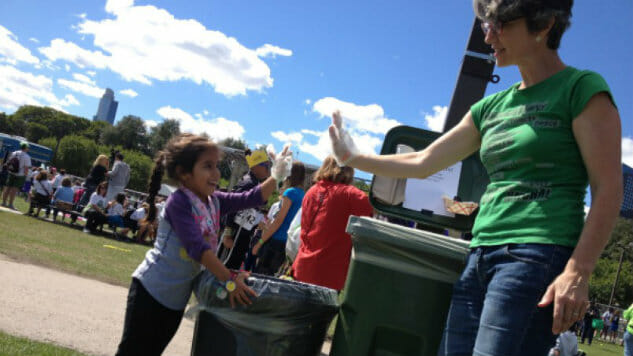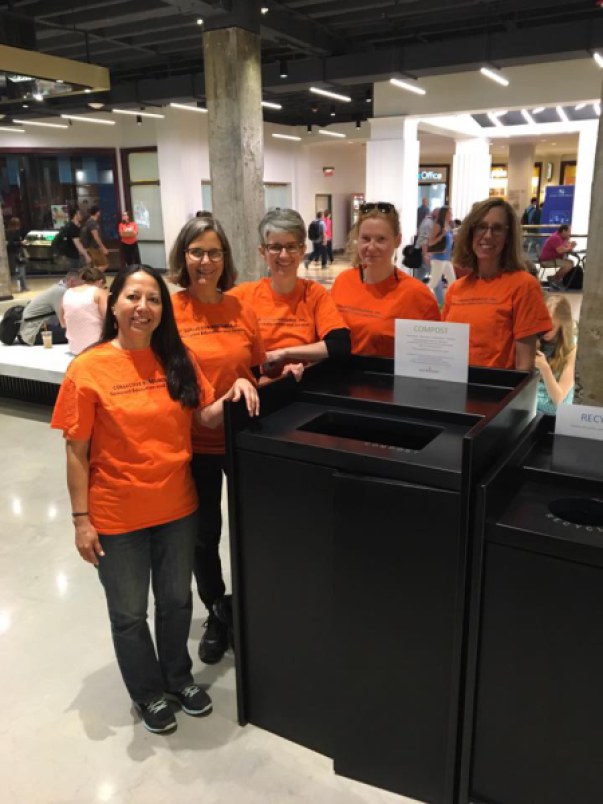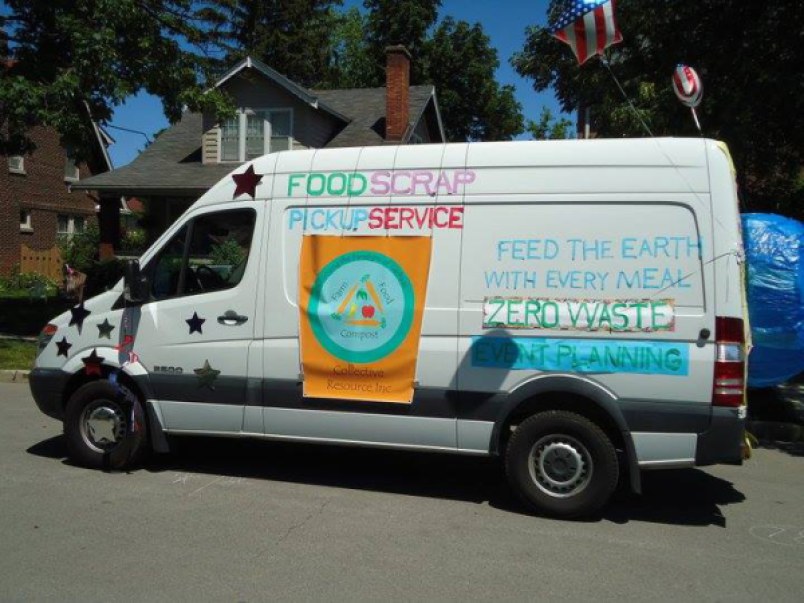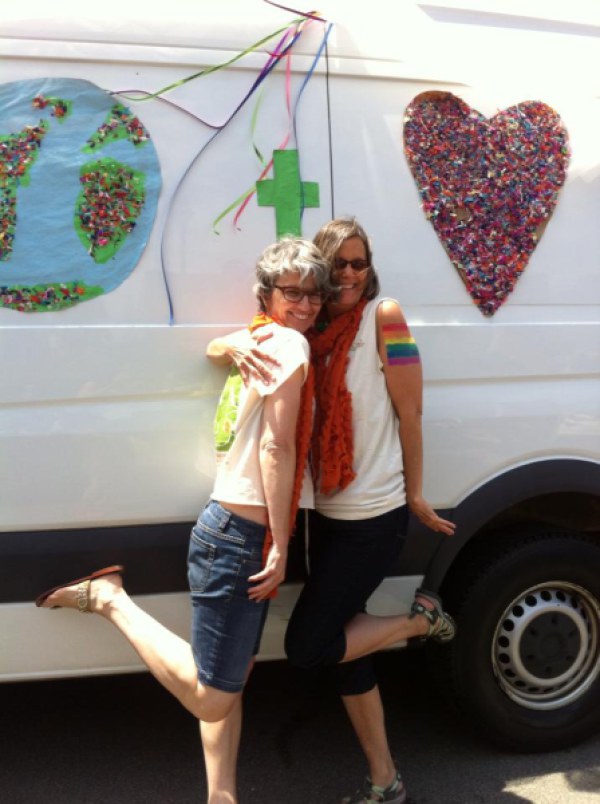Erlene the Compost Queen Is on a Mission to Make Composting Easy
Photos courtesy of Erlene Howard and Collective Resource Food Features
Composting gets a bad rap. Ask people why they don’t do it, and they’ll reply that it’s messy, ugly, dirty, smelly or just plain confusing and time-consuming. New York City residents have complained that the city’s pilot composting program stinks up the streets and attracts rodents.
But one woman in a second city is on a mission to change all of those preconceptions with easy, attractive — fun, even — composting programs.
Erlene Howard, a bookkeeper who loved to cook with lots of fruits and vegetables, was living in a condo in Chicago that lacked a back yard. Composting was challenging for Howard, and her own situation inspired her to make composting easier for city residents.

About one-third of the world’s food goes to waste — oftentimes because of a bruise on an apple, or a dent in a bell pepper, and other times because it simply didn’t make it from plate to mouth. But landfills themselves are creating ugly bruises on the face of earth, and Howard couldn’t stand to think that Chicagoans waste 55 million pound of food every month. With major cities like New York and Los Angeles already pioneering programs like LA Compost and the NYC Compost Project, she knew Chicago had to join the zeitgeist. Howard arranged to start a program that would pick up the food scraps from people’s homes and restaurants, rather than having them drop them off at common sites at community gardens.
Howard started Collective Resource out of her Toyota Camry with only three customers. Her warm, colorful personality soon endeared her to customers in Chicago communities. Howard made customers look forward to seeing her Camry pull around the bend and into their driveway.

The business has since grown to 475 residential and 100 commercial customers. She bought her first colorfully-decorated cargo van the first year of business, and now has three. The collections span from the South Loop of Chicago north to Lake Forest, along the North Shore. In the first six months, she collected one ton. Now her organization collects that amount every day. The average is 20 tons per week. In 2016, they celebrated a total collection milestone of 2,000 tons.
Howard realized that many customers didn’t actually consider the waste stream before planning an event or a party, so she began to offer zero waste event consulting, compost education, and event staffing. Now, ecoconscious party planners, companies and schools in Chicago can hire Collective Resource Zero Waste Consultants to select reusables or compostables for events, and will help manage the waste stream during and after an event. At events, Zero Waste Consultants aren’t there to wag fingers at guests throwing away disposable plates — instead, they seek to make waste education fun, kind and friendly for guests through colorful signage and easy explanations, especially for children.

Aptly-nicknamed Erlene “The Compost Queen,” says that she hopes for a sustainable model for entire communities such as Evanston, where her business began. She would love to see more localized composting options, so whole communities could feed into anaerobic digestion.
Most importantly to Howard, composting is just one part of earth renewal. Howard has been encouraging local communities to grow their own food and start their own community gardens, with materials coming from local sources as well. “I just don’t think it’s a sustainable model that most of our food is coming from California where they have droughts,” Howard said. “We would be much more food secure if we were growing more food locally.”

Howard’s business picks up only a small fraction of the total amount of waste in Chicago and Evanston each year. Cost may be a deterrent to some people. When customers sign up, they receive a five gallon bucket. Weekly pickup is $10.50 and biweekly pickup is $15.50 in Howard’s business model.
In this day and age, people are becoming more aware of recycling in their homes. However, some situations are worse for the environment than others. “If you look at any street fair, it’s a landfill extravaganza,” she added.
Some restaurants may be deterred because of cost of inorganic and organic recycling. The landfill model is very inexpensive, and waste hauling companies make a lot of money using the landfill model. If a business wants to do recycling, they have to write it into their contract and educate employees. Especially if a business is really small, it can be easier to use the landfill model. In composting, there are costs and kitchen space involved.
But Howard tries to attract more customers with her facilitative model. “Our model is designed to make it as easy as possible for the person or restaurant,” Howard said. They pick up the scraps with a cargo van. They provide the bin. They make sure that it is up to food inspector code. Although it’s more expensive, it’s also better for the environment than landfilling.

If a business is interested, they might choose to use a tool called Lean Path. The tool tracks how much food comes in, how much spoiled, how much cooked, and how much thrown out. It uses technology to measure and then reduce food waste.
Lean Path is free, but tracking and training costs money. It is not a cheap process to be environmentally friendly, even if reducing waste might save money in the long run. However, Howard hopes that the cost of organic recycling, or composting, will be reduced in the future. When inorganic recycling, the recycling of cans and bottles and such, started, there wasn’t a lot of output, Howard pointed out. It was more expensive for the trucks to transport the materials. The situation evolved to where more companies were using recycled materials to make products. The whole program just grew. Howard hopes that this will also happen for organic recycling.
The term Howard used was anaerobic digestion, the process wherein fermentation breaks down all natural materials in the absence of oxygen. One of the end products is biogas, which can be used for natural gas heating, electricity and transportation fuels. Composting in general turns what would be wasted food back to the community. As vehicles evolve to use biogas as fuel, there may be more eager takers of composted materials. Until then, Howard will keep her three cargo vans.